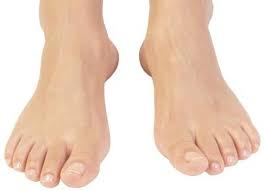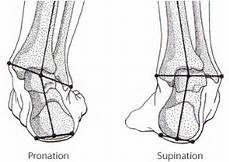Big Toes for Big Performance
- Kim Shone (BA)Hons, MSMA, BTEC L.5 SRMT (NLSSM)
- Mar 14, 2019
- 4 min read
You use your feet every day, yet have you ever considered how you use them? As this how can determine postural and biomechanical function!!!

What: The Big Toe
Scientific Name: Hallux (Plural: Halluces)
From Hallux Rigidus (osteoarthritis of the big toe) to Hallux Valgus (bunion), there are a plethora of dysfunctions which can present in the big toe alone which can cause pain symptoms in the foot, but can also influence biomechanical dysfunction into the hips and pelvis, and thus potential risk of injury.
Research has found that we absorb circa 119% of our body weight through the hallux (Jacob, H. A. C. "Forces acting in the forefoot during normal gait–an estimate." Clinical Biomechanics 16.9 (2001): 783-792). However, in my years of clinic and sport work, when I see client's for the first time and we go through the appropriate assessments, very rarely do I see people efficiently using their big toe.
- Whether you are an International Athlete, someone who hates exercise, or have a career which involves sitting for the majority of the day - no matter what you do, how you use your big toe is VITAL for healthy longevity of the joint.
Imagination time: You need to pull on a heavy rope, yet as you pull it, there is a transverse force on the rope causing the rope to twist and turn. That is what happens in the big toe with regards to hallux valgus aka bunion. Thus, bunion's alone reduce the capacity to which the hallux can absorb pressures functionally which can cause further dysfunction, potentially leading to foot aches and pains.
- Nakai et al., (2019) found that bunions can be directly connected to fallen arches aka supination, and can lead to forefoot pain.
(Nakai, Kengo, et al. "Relationship between forefoot structure, including the transverse arch, and forefoot pain in patients with hallux valgus." Journal of Physical Therapy Science 31.2 (2019): 202-205).
- Chatzistergos et al., (2019) also found that reduced function in the "Paper Grip Test' could increase risk of falling due to reduced functional strength of the foot-ankle muscles.
(Chatzistergos, Panagiotis E., et al. "The relationship between hallux grip force and balance in people with diabetes." Gait & posture (2019)).
- The function of the hallux is paramount for balanced pressures leading into the tibia and fibia.
- Reduced absorption through the hallux means the pressure is absorbed by the rest of the foot and where depends on your individual prevelance for supination or pronation.
- Whether you pronate or supinate can determine pressures and thus function vs dysfunction into the knees, hips, pelvis and even into the lower back. Having back pain due to such dysfunction is more common than people think, emphasising the importance to discover the causes of pain, rather than just treating the symptoms.
- There can be a trigger point in the roof of the mouth that can release the calf - FACT! How the feet can impact the jaw and vice versa has been known in elite sport for decades - FACT! I advise looking into the likes of Anatomy Trains, Gil Hedley, John Sharkey and Susan Findlay has a course which focuses on the Neck, Jaw and Chest which covers this topic. For Susan's course dates, check out: http://www.susanfindlay.co.uk/Courses/Neck-Jaw-and-Chest-Massage

SUPINATION aka Pes Planus:
Reduced pressure absorption through the hallux can weaken the function of the medial longitudinal arch which provides insufficient support for the tibia, causing the arch to collapse.
Pain can present predominantly on the medial aspect of the foot, but depending on level of medial/lateral rotation, there can also be pain on the lateral aspect of the foot also.
PRONATION aka Pes Cavus:
The lateral aspect of the anterior transverse arch receives increasing pressures to compensate for the lack of absorption through the hallux to which the lateral longitudinal arch receives the dysfunctional pressures.
Pain can present predominantly on the lateral aspect of the foot, particuarly in the instep, and can cause inflammation of the lateral anterior transverse arch.
Whether you pronate or supinate, such dysfunction can lead to further problems including hammer toes, claw toes and adducto varus deformities.
For the client/patient:
- Use more big toe, considering functional alignment which is most biomechanically efficient when aligned with the inner ankle (medial malleolus).
- Walk heel - toe (unless sprinting).
- Use your glutes and abs to prevent pelvic anterior rotation which can cause increased pressures into the plantar plate (balls of the feet) both posturally and biomechanically.
- Towel Scrunches: Place a towel under both feet, aligning your feet with knees and hips, ensuring the halluces are aligned with the medial malleolus. Now scrunch the towel by curling and dragging the towel back with your toes.
- Check for leg length differences with a professional: In cases where one foot presents differently to the other, it can be related to a leg length difference.
For the therapist:
- Use assessment techniques to assess how much weight is absorbed by both big toes and compare. Other assessments can include the Jack's Test.
- When treating the foot and ankle, make sure their is sufficient support via bolsters/cushions/towels.
- Treat the toes and feet with an aim to improve alignment and thus function.
- Use various techniques including STR, compression, myofasial release and MET whilst remaining aware of the lack of tissue protecting the bones and therefore, treatment should be sensitive.
- Check for leg length differences, especially if there is a clear difference in how both feet present.
Want to know how Kim can help you, feel free to get in contact today!


.jpg)
.jpg)
_edited.jpg)




































Comments